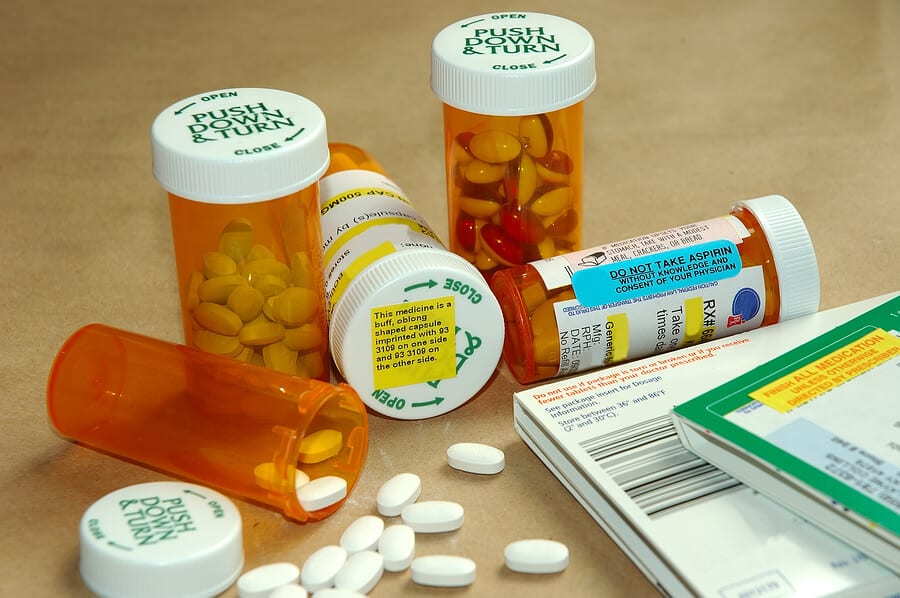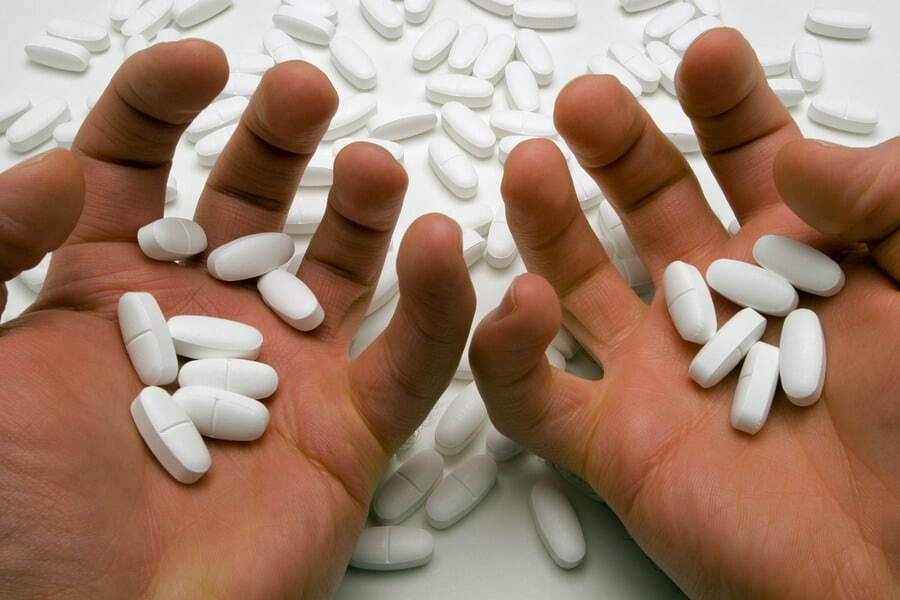
Prescription drug addiction can occur when a person becomes dependent on a pharmaceutical medication. This condition can happen incidentally, over time, due to regular use, or it can occur as a result of abuse. Taking too much of the medication too frequently or taking the medication illicitly without a prescription constitutes abuse.
Continually using the drug over a prolonged period or increasing the dosage often results in the development of tolerance. Tolerance is a physiological state characterized by diminishing effects of a drug and the user gradually requiring larger amounts to achieve the desired high.
In addition to tolerance, dependence on the drug occurs as the body grows accustomed to the drug’s presence over time and becomes unable to function without it. When the user attempt to quit, unpleasant withdrawal symptoms manifest as a result.
Once addiction sets in, abuse becomes compulsive and difficult to surmount. Prescription drug addiction can lead to severe long-term consequences, including physical injury and mental illness, and also affect personal and professional relationships.
What Are Prescription Drugs?
The drug category referred to a prescription medication includes any form of pharmaceuticals that cannot be legally sold without a prescription issued by a licensed health provider. Because prescription drugs require a doctor’s signature to obtain, they can be misused/abused in a few different ways, including the following:
- Acquiring them from a family member or friend who has a prescription
- Purchasing them illicitly on the black market
- Taking larger doses or more frequently than recommended
- Doctor shopping – visiting multiple doctors or pharmacies in an attempt to garner more drugs
Commonly Abused Prescription Medication

Some prescription drugs are not misused/abused as often as others due to the effects of each drug. Psychoactive prescription medication is classified in specific groups based on their properties.
Opioids
Opioid painkillers are prescription drugs which attach to the opioid receptors in the body’s central nervous system and reduce pain.
Since opioids have a high potential for addiction, they require a prescription to use and are not included in over-the-counter products. Some of the most common opioid prescription drugs include the following:
- Oxycodone – Percocet and OxyContin
- Diphenoxylate – Lomotil
- Hydrocodone – Lortab, Lorcet, Norco, Vicodin
- Morphine – Avinza, Kadian and MS Contin
- Fentanyl – Duragesic
- Codeine – Tylenol 3 and Tylenol 4
- Hydromorphone – Dilaudid
- Methadone – Dolphine
- Meperidine – Demerol
- Propoxyphene – Darvon
When used according to a doctor’s orders, opioids can be extremely effective at relieving pain. Their use can improve the quality of life for those suffering from acute or chronic pain, including after surgery, injuries, and during cancer treatment.
However, tolerance and dependence on opioids can develop rapidly, and addiction can form within just a couple of weeks of being used regularly. If people increase their doses too much, they may experience severe complications and be in danger of profound respiratory depression, overdose, and death.
Stimulants
Stimulant prescription drugs are usually prescribed to those with attention-deficit hyperactivity disorder or obesity. They can boost energy and alertness, and also elevate blood pressure and suppress appetite.
Stimulant prescription drugs are usually taken in pill form, but some can be administered as a skin patch or a liquid. Stimulants vary on how long they are effective and include three classifications: short-acting, intermediate-acting and long-acting.
The most common short-acting stimulant prescription medications include the following:
- Adderall
- Dexedrine
- Focalin
- ProCentra
- Ritalin
- Zenzedi
Intermediate-acting stimulant drugs are effective for longer than short-acting ones but still require a regular dosage to work correctly. The most common ones include:
- Evekeo
- Metadate ER
- Methylin ER
- Ritalin SR
Long-acting stimulants do not require A regular dosage and can remain effective for hours, or even days while increasing alertness and attention. The most common ones include:
- Adzenys XR-ODT
- Adderall XR
- Concerta
- Daytrana
- Focalin XR
- Metadate CD
- Mydayis
- Quillivant XR
- Quillichew ER
- Ritalin LA
- Vyvanse
Central Nervous System (CNS) Depressants

Central nervous system depressants reduce brain activity and include drugs such as sedatives or tranquilizers. Most depressants, such as benzodiazepines, work by controlling the release of the brain neurotransmitter known as gamma-aminobutyric acid (GABA). GABA decreases brain activity, leading to a feeling of relaxation and drowsiness.
Depressants are often prescribed to those suffering from sleep disturbances or anxiety and panic disorders. The most frequently prescribed CNS depressants include the following:
- Benzodiazepines
- Non-benzodiazepine sleep medications
- Barbiturates
Some of the most commonly prescribed benzodiazepines are diazepam (Valium), alprazolam (Xanax), and clonazepam (Klonopin). These are often prescribed to treat panic attacks and anxiety. However, if taken long-term, people can develop dependence, tolerance, and addiction.
Non-benzodiazepine sleep medications include eszopiclone (Lunesta), zaleplon (Sonata) and zolpidem (Ambien). They work on the same receptors as benzodiazepines but have a reduced risk of dependence.
Barbiturates include phenobarbital (Luminal Sodium), pentobarbital sodium (Nembutal), and mephobarbital (Mebaral). They are prescribed less often than other sedatives due to a higher risk of overdose.
Antipsychotics
Antipsychotics are prescription drugs that treat psychological disorders such as schizophrenia or issues stemming from bipolar disorder or Tourette’s syndrome.
Older antipsychotics developed in the 1950s include the following:
- Chlorpromazine
- Flupentixol
- Haloperidol
- Levomepromazine
- Perphenazine
- Pericyazine
Antipsychotic medications that were developed more recently include:
- Aripiprazole
- Amisulpride
- Clozapine
- Olanzapine
- Quetiapine
- Risperidone
Other Pain Medications
There have been some reports of individuals developing addictions to non-opioid pain medications such as gabapentin (Neurontin) and pregabalin (Lyrica), although this is much less common than opioid addiction. These drugs are usually prescribed to treat conditions such as nerve pain, epilepsy, and fibromyalgia.
Prescription Drug Abuse
Most prescription drug addiction is the result of the use, misuse, or abuse of opioids, benzodiazepines, or stimulants. Some people are more likely than others to develop a prescription drug addiction, and this is due to several factors, including the following:
- Height, weight and other individual characteristics
- A family history of drug or alcohol abuse
- The drug they are currently using
- Whether they are treating a psychiatric disorder or acute or chronic pain
- Past or present addictions to other substances, such as alcohol and tobacco
- Exposure to peer pressure or an environment where drug use is accepted and/or encouraged
- Easier access to medications, such as having prescription drugs in the home
Anyone can become addicted to a prescription medication over time if they misuse or abuse the drug for long enough. While there have been plenty of examples of people who have developed an addiction even when taking the drug as prescribed by a physician, this is much less common than as a result of misuse.
Medical Consequences
Prescription drug addiction or abuse can lead to numerous potential health complications.
Opioids can lead to low blood pressure, a reduced breathing rate and the potential for breathing to stop. An opioid overdose carries a significant risk of death.
Anti-anxiety medications and sedatives can lead to memory problems, low blood pressure and slowed breathing, and an overdose can cause coma or death. Abruptly discontinuing these medications may result in withdrawal symptoms that can include nervous system hyperactivity and seizures.
Stimulants can cause perilously high body temperature, heart problems, hypertension, seizures or tremors, hallucinations, aggressiveness, and paranoia.
Treatment for Prescription Drug Addiction
Prescription drug addiction can be life-threatening. Those who suffer are urged to seek treatment immediately on an inpatient or intensive outpatient basis.
Our center offers an integrated, evidence-based approach to addiction, comprised of essential therapeutic services such as psychotherapy, individual and family counseling, psychoeducation, and group support.
We provide clients with the tools and support they need to achieve abstinence and enjoy long-lasting sobriety and wellness. Call us today to find out how we can help you reclaim your life and experience the happiness and harmony you deserve!